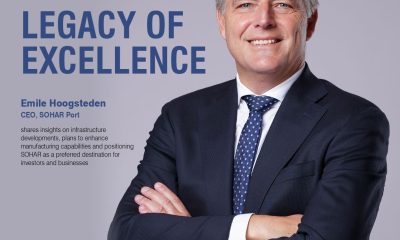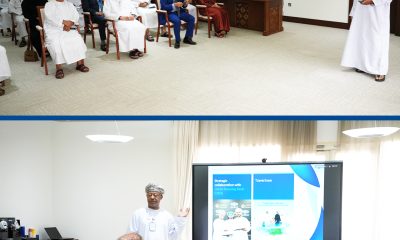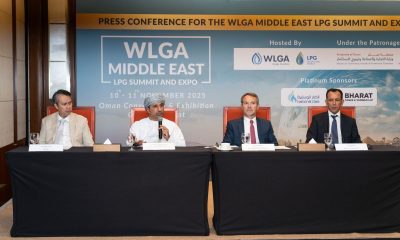Economy
Morocco to Resume Flexible FX Regime to Tackle External Shocks

(Bloomberg) –Morocco is able to switch back to a more flexible foreign-exchange regime at the first sign of an external shock such as a surge in oil prices, Bank Al-Maghrib Governor Abdellatif Jouahri said.
The country took a break earlier this year from its 2018 push for a more flexible exchange rate as it struggles to patch up deteriorating finances and as lifelines from Gulf donors dried up. After widening the dirham’s trading band a year ago, authorities were expected to wait until at least 2020 before considering further easing their hold on the currency.
After the first phase of reforms last year, the central bank will continue to keep the dirham pegged to a euro-dollar basket with a ratio of 60%-40% respectively, the governor said. The next step is to further widen the fluctuation band at the first sign of an external shock to its economy, he said in an interview late Friday in Washington during the International Monetary Fund meetings.
Timing Reforms
“For us, the reform aims to absorb external shocks and boost Morocco’s competitiveness,” Jouahri said, adding that the IMF deems this as an opportune time to push ahead with the reforms. “The timing is the question and should be well chosen.”
Following these changes, the country plans to move from managing its currency to a monetary policy that targets inflation where interest rates will be be adjusted more frequently, he said.
After the second phase of its foreign-exchange reform, the central bank will “distance” the currency from the trading basket and give the market room to fix the dirham’s rates, he said. “Supply and demand will determine the dirham’s value,” he said.
The progress of the reforms hinges on budgetary discipline, he added, calling it a “prerequisite.” To push ahead with the next phase of change, he wants to ensure companies, especially small- and medium-sized firms, are adjusting to the reforms introduced last year.
While Morocco has avoided the upheavals that have hit elsewhere in North Africa, its economy has been struggling to meet rising social demands, beset by a poor harvest and still-weak demand from its key markets in Europe. It projects 2019 economic growth at 2.7%, down from a previous forecast of 3%. The king has previously called for a new model of economic development.
Morocco King Orders Banks to Put More Money In Development
The new model won’t slow its currency reforms, the governor said. The country is also planning a tax amnesty next year for the so-called gray economy as well as local firms and citizens holding assets abroad.
“We tell people: ‘Let bygones be bygones, pay 5% and say goodbye to the informal sector,’” Jouahri said.
Morocco lost ground lately on global competitiveness, he said, adding that the government “must catch up.”
-

 Magazines1 month ago
Magazines1 month agoOER – September 2025 Issue
-

 News1 month ago
News1 month agoKitchenomiKs Secures Investment of US$3.2M Led by Jasoor Ventures
-

 Alamaliktistaad Magazines1 month ago
Alamaliktistaad Magazines1 month agoAlam Al Iktisaad – September 2025 Edition
-

 News1 month ago
News1 month agoCent Capital, AI Finance App by ex-AWS Strategist ‘The Beast of Bay Area,’ Launches to End Financial Anxiety, Hits $1M AUM
-

 News1 month ago
News1 month agoOman Inaugurates ‘Hadatha’ – Its All-New Cybersecurity Center
-

 Banking & Finance1 month ago
Banking & Finance1 month agoOman Arab Bank Highlights Its Ongoing Strategic Initiatives and Future Plans
-

 News1 month ago
News1 month agoIEA Expects Global Oil Market to Remain Oversupplied in 2026
-

 Energy1 month ago
Energy1 month agoWLGA Middle East LPG Summit & Expo 2025 to be held at OCEC on November 10 and 11






























